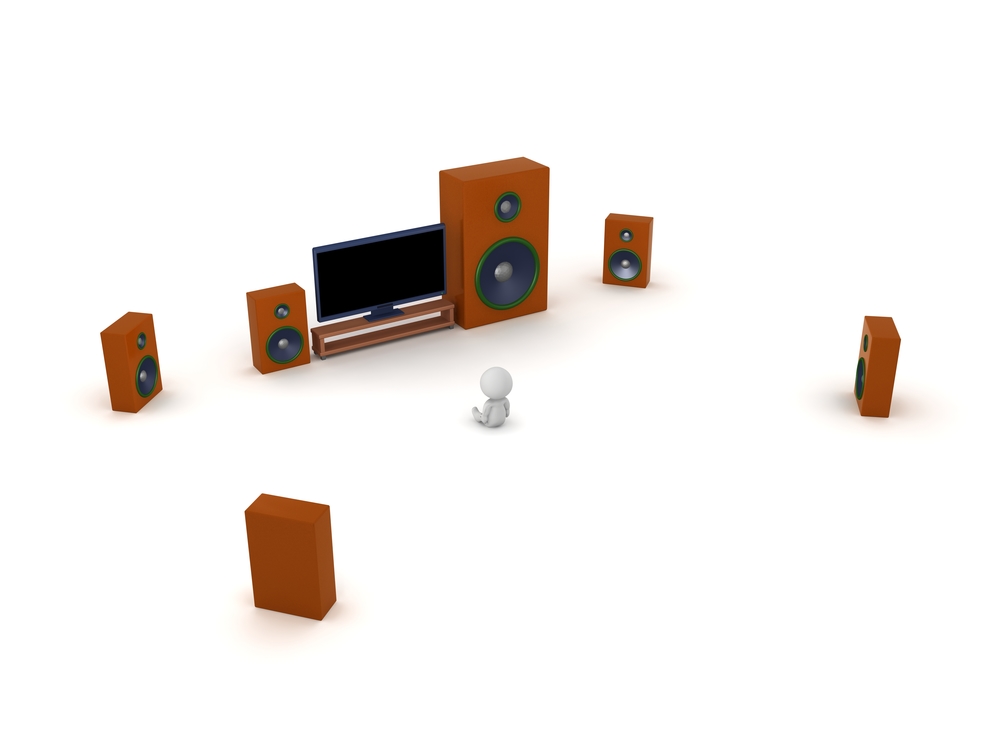A proficient surround sound set up can delivery the ultimate immersive 360-degree home audio listening experience. Surround sound should come at you from all angles, putting you at the center of the audio action. This fantastic feature transforms a simple home movie night into a vibrant and robust entertainment adventure.

How does it work?
For productions using surround sound, audio engineers have developed a system where noises in a particular scene are split into separate channels. Sound effects that go with visuals go in one direction, sounds that accompany actions go in another. The surround sound receiver directs all of the sounds to the proper channels. The central speaker channel is where the majority of the dialogue and other speaking parts go. The rest of the system’s speakers process the different sounds. An audio system can be either be extensive or very precise. For instance, a setup with six speakers will transmit sound just right, no matter how many channels are encoded into the disc.
When your setup is connected and organized accordingly, the speakers will effectively work together to jam the room with smooth, clear audio, delivering an enjoyable listening and viewing time.
Today’s article lists some proven strategies on how to make your home theater system deliver fantastic audio goods so that you can utilize your equipment in the best way.
The Right Speakers
Using the right speakers is utterly essential. A lot of people have the wrong speakers that don’t match the rest of their home theater system. Never use speakers with a metal dome or single soft tweeter; multi-tweeters are the way to go. Anything else will only give you poor quality and stiff acoustics. Your central speaker should be similar to what’s in the left and right of your unit; don’t use horizontal format center speakers. Additionally, monopoles, or even bipoles, are much more preferable than dipoles. Dipoles are limited to not have off-axis distribution. You wouldn’t want that scenario, especially with large audio units.
Seating Layout
This one may be the simplest tip yet. Do not put your chairs near the walls, especially the back wall in your home media room. Doing so will hinder surround sound encirclement, not to mention you’ll get a booming bass. Chairs that are too close to the speakers will cause extreme converging of sounds in one area. It is advisable to plan your seating placement before you get your audio system; this is the first thing you need to do when planning a home media room. For more tips on home theater seating layout ideas, check our blog for future posts on the topic.
Subwoofers
As a general rule, one row of chars require two subwoofers; two rows need four, even more, depending on the room layout – but you get the idea. A horn-loaded mega subwoofer will not be able to produce smooth bass. You will get too much bass, but it will come in massive peaks at some frequencies and the same huge dips at others, which is not ideal for optimal listening. A tip from professionals is to utilize more subwoofers and set up their mode-canceling features. This step will deliver smooth, consistent bass drops across your home theater room. Additionally, more subwoofers in different areas in the room will increase the average bass.
Acoustic Treatment
A good audio system will only work efficiently if it’s in an audio-treated room. There is a lot of information out there about room acoustics concepts; our best advice is to stick to the basics. Bass trapping can help you get the room modes in check. One option is to use deep fiberglass traps, which are relatively affordable and highly effective. The only drawback that bass trappings have is they occupy a significant amount of space. However, you can always opt to use the area in the risers behind the screen.
Additionally, your media room should not have a lot of echo or dead sounds. Wall-to-wall carpet and the right home theater seats can help in sound absorption. Having these materials can let you have conversations in your media room that feel and sound natural.
Turn to the Experts
To accurately amplify, no pun intended, the function of your surround sound system, turn to a professional to do the right audio adjustment and calibration. Expert sound technicians have the skills and know-how to make sure to get every last bit of maximum performance out of your home theater system.
